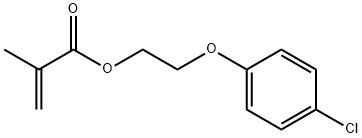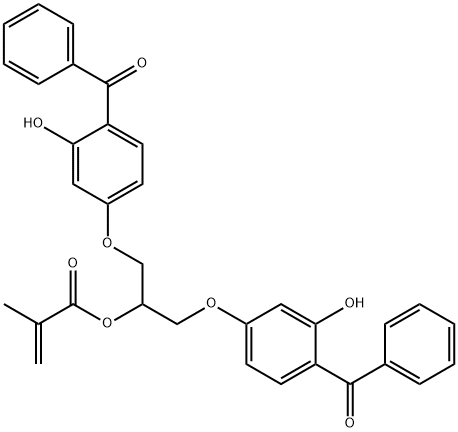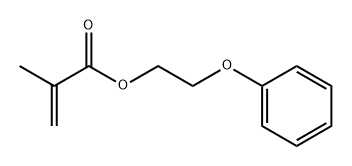2-Phenoxyethyl Acrylate
Synonym(s):2-Phenoxyethyl acrylate
- CAS NO.:48145-04-6
- Empirical Formula: C11H12O3
- Molecular Weight: 192.21
- MDL number: MFCD00053696
- EINECS: 256-360-6
- SAFETY DATA SHEET (SDS)
- Update Date: 2024-12-18 14:07:02

What is 2-Phenoxyethyl Acrylate ?
Description
2-Phenoxyethyl acrylate is a nonflammable, low-volatility liquid with moderate solubility in water. 2-Phenoxyethyl acrylate is a monofunctional acrylic monomer that free radicals can polymerize. In particular, this compound is designed for ultraviolet and electron beam curing applications and used in U.V &E.B cured coatings, inks, and adhesives.
The Uses of 2-Phenoxyethyl Acrylate
2-Phenoxyethyl Acrylate is used as a monomer in multifunctional and shape memory polymers.
The Uses of 2-Phenoxyethyl Acrylate
Ethylene glycol phenyl ether acrylate (PA) monomer may be used to fabricate polymerization induced grating pattern on photopolymer films.
General Description
Ethylene glycol phenyl ether acrylate (PA) is a monofunctional acrylate.
Flammability and Explosibility
Non flammable
Safety Profile
Moderately toxic by skin contact. Mdly toxic by ingestion. A skin irritant. A combustible liquid. When heated to decomposition it emits acrid smoke and irritating fumes
Properties of 2-Phenoxyethyl Acrylate
| Boiling point: | 84 °C0.2 mm Hg(lit.) |
| Density | 1.104 g/mL at 25 °C(lit.) |
| vapor pressure | 0.25Pa at 25℃ |
| refractive index | n |
| Flash point: | >230 °F |
| storage temp. | 2-8°C |
| solubility | Practically insoluble in water |
| form | clear liquid |
| color | Colorless to Almost colorless |
| Water Solubility | 525mg/L at 25℃ |
| BRN | 2102773 |
| CAS DataBase Reference | 48145-04-6(CAS DataBase Reference) |
| EPA Substance Registry System | 2-Phenoxyethyl acrylate (48145-04-6) |
Safety information for 2-Phenoxyethyl Acrylate
| Signal word | Warning |
| Pictogram(s) |
 Exclamation Mark Irritant GHS07  Environment GHS09 |
| GHS Hazard Statements |
H315:Skin corrosion/irritation H319:Serious eye damage/eye irritation H335:Specific target organ toxicity, single exposure;Respiratory tract irritation H411:Hazardous to the aquatic environment, long-term hazard |
| Precautionary Statement Codes |
P261:Avoid breathing dust/fume/gas/mist/vapours/spray. P264:Wash hands thoroughly after handling. P264:Wash skin thouroughly after handling. P271:Use only outdoors or in a well-ventilated area. P273:Avoid release to the environment. P302+P352:IF ON SKIN: wash with plenty of soap and water. P305+P351+P338:IF IN EYES: Rinse cautiously with water for several minutes. Remove contact lenses, if present and easy to do. Continuerinsing. |
Computed Descriptors for 2-Phenoxyethyl Acrylate
| InChIKey | RZVINYQDSSQUKO-UHFFFAOYSA-N |
New Products
Tert-butyl bis(2-chloroethyl)carbamate (S)-3-Aminobutanenitrile hydrochloride N-Boc-D-alaninol N-BOC-D/L-ALANINOL 3-Morpholino-1-(4-nitrophenyl)-5,6-dihydropyridin- 2(1H)-one N-octanoyl benzotriazole 3,4-Dibenzyloxybenzaldehyde 1,1’-CARBONYLDIIMIDAZOLE R-2-BENZYLOXY PROPIONIC ACID 1,1’-CARBONYLDI (1,2-4 TRIAZOLE) 4-HYDROXY BENZYL ALCOHOL 3-NITRO-2-METHYL ANILINE (2-Hydroxyphenyl)acetonitrile 4-Bromopyrazole 5-BROMO-2CYANO PYRIDINE 5,6-Dimethoxyindanone 5-broMo-2-chloro-N-cyclopentylpyriMidin-4-aMine 2-(Cyanocyclohexyl)acetic acid 4-methoxy-3,5-dinitropyridine 2-aminopropyl benzoate hydrochloride 1-(4-(aminomethyl)benzyl)urea hydrochloride tert-butyl 4- (ureidomethyl)benzylcarbamate diethyl 2-(2-((tertbutoxycarbonyl)amino) ethyl)malonate Ethyl-2-chloro((4-methoxyphenyl)hydrazono)acetateRelated products of tetrahydrofuran








You may like
-
 2-Phenoxyethyl Acrylate (stabilized with MEHQ) CAS 48145-04-6View Details
2-Phenoxyethyl Acrylate (stabilized with MEHQ) CAS 48145-04-6View Details
48145-04-6 -
 Ethylene glycol phenyl ether acrylate CAS 48145-04-6View Details
Ethylene glycol phenyl ether acrylate CAS 48145-04-6View Details
48145-04-6 -
 N-Vinylformamide 99%View Details
N-Vinylformamide 99%View Details
13162-05-5 -
 2-ETHYLPYRIDINE 100-71-0 99%View Details
2-ETHYLPYRIDINE 100-71-0 99%View Details
100-71-0 -
 7439-89-6 Electrolytic Iron Flakes 99.9% MaxView Details
7439-89-6 Electrolytic Iron Flakes 99.9% MaxView Details
7439-89-6 -
 7439-89-6 98.0% MinView Details
7439-89-6 98.0% MinView Details
7439-89-6 -
 Reduced Iron Powder 99.8% MaxView Details
Reduced Iron Powder 99.8% MaxView Details
7439-89-6 -
 Electrolytic Iron Powder 7439-89-6 99.8% MaxView Details
Electrolytic Iron Powder 7439-89-6 99.8% MaxView Details
7439-89-6